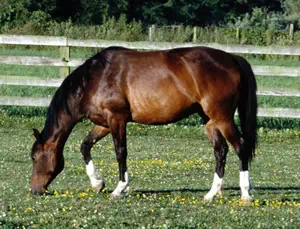|
 LOUISIANA LOUISIANA
Carcass Disposal State Regulations
General
Depending on circumstances, large animal carcass disposal may be regulated by a state's solid waste, medical waste, agriculture, or emergency management regulations. If your state does not provide specific guidance or regulations relating to large animal carcass disposal, check with your local health department, or city/county laws and ordinances.
In addition, during emergency situations and disasters (e.g., blizzards, floods, hurricanes, mass die-offs, etc.), consult with your local emergency officials, your state emergency planning agency, or the state veterinarian, to determine approved methods of carcass disposal.
Applicable Agencies and Regulations for Louisiana
Louisiana Department of Agriculture and Forestry
Address: 5825 Florida Blvd., Baton Rouge, LA 70806
Contact Information: http://www.ldaf.louisiana.gov/portal/ContactUs/tabid/58/Default.aspx
Rules and Regulations: RS 3:2131: Cremation or burial of animal carcasses. This is the only code that deals with carcasses of mammals, and it's only for preventing the spread of disease. It says that all animals with contagious or communicable disease shall be disposed of in a sanitary manner by cremation or deep burial. Disposal options addressed:
- Rendering: Can be done if facilities can transport or handle carcasses in a manner to prevent dissemination of infection.
- Burial: Placed in a hole or pit not less than 6 ft deep.
- Burning: Cremation by incineration.
Rules and Regulations: Title 7: Agriculture and Animals, Part XXI: Diseases of Animals, Chapter 7: Poultry, Section 707: Sanitary Disposal of Dead Poultry. All commercial poultry producers need a certificate of approval and must have an approved method of disposing of carcasses. Disposal options addressed:
- Rendering: Must be transported in covered containers; may be held as long as storage doesn't create sanitary problems. Storage and transportation must be approved by the Livestock Sanitary board.
- Burial: In disposal pits that meet design standards to prevent the spread of disease. On-site burial may be used in mass deaths as long as it is not due to contagious or infectious disease. The State Veterinarian's Office must be notified.
- Burning: Incinerators that are approved by the Livestock Sanitary Board.
- Composting: Design and construction and use approved by the Livestock Sanitary Board.
- Other Methods: Digesters approved by the Livestock Sanitary Board
More Information
Poultry Best Management Practices (Louisiana State University Ag Center, 2000). Commercial poultry producers shall be required to dispose of dead poultry by composting, incinerators, rendering plant or digesters. Disposal options addressed:
- Rendering: Transported in covered containers, may be held as long as storage doesn't create sanitary problems. Storage and transportation must be approved by Livestock Sanitary board.
- Burning: Incinerators that are approved by the Livestock Sanitary Board.
- Composting: Design and construction and use approved by Livestock Sanitary Board and according to NRCS Standards.
- Other Methods: Digesters approved by Livestock Sanitary Board
The Cornell Waste Management Institute (CWMI) maintains a database of carcass disposal state regulations promulgated by state environmental, agricultural and other agencies. There may be additional information on this site, not found on VetCA, that can be helpful to veterinarians, ranchers and farmers. Click here to access the CWMI information for Louisiana.

Choose another state
|

